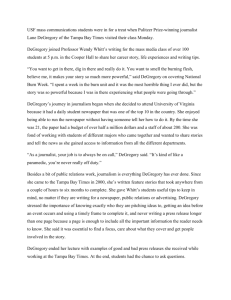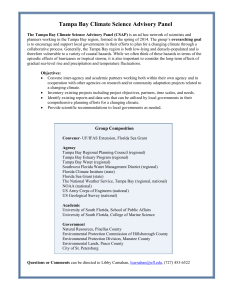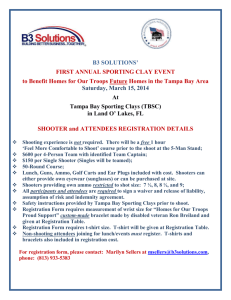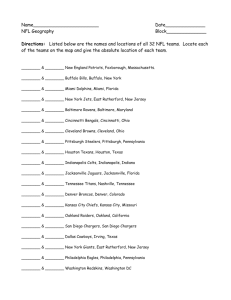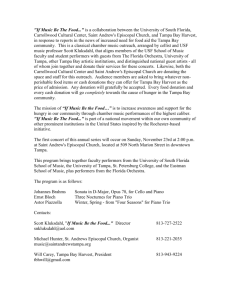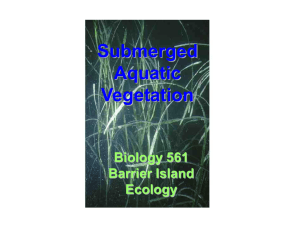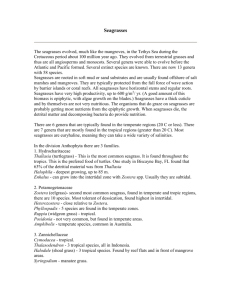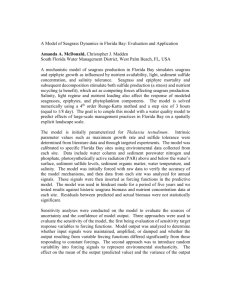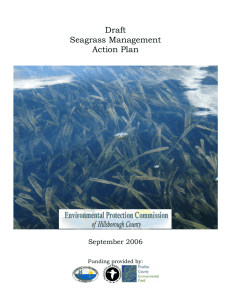Seagrasses: Underwater Food Factories
advertisement
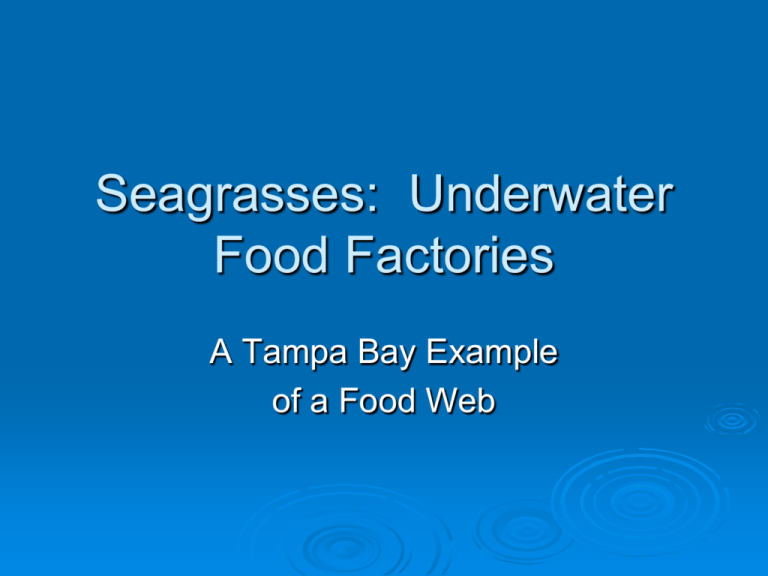
Seagrasses: Underwater Food Factories A Tampa Bay Example of a Food Web Producer Organism that can capture energy from sunlight or chemicals and use it to produce food from inorganic compounds, also called autotrophs. Ex- seagrasses, phytoplankton, algae, trees Consumer Organism that relies on others for food. Ex- crabs, you, sharks, fish, stingrays Decomposer Organism that breaks down and obtains energy from dead organic matter. Ex- bacteria, worms, crabs Bacteria, Fungi - Generally microscopic, they decompose seagrass leaves Herbivore Obtains energy by eating plants. Ex- manatees, sea turtles Carnivore Obtains energy by eating only animals. Ex- sharks Omnivore Obtains energy by eating both plants and animals. Ex- raccoons Estuary Habitat having a mixture of fresh and salt water. Ex- Tampa Bay Detritus Dead or decaying organic matter Algae - Fuzzy-looking growth on seagrass leaves. When the leaves die, the leaf and the algae become detritus (dead or decaying organic matter). Seagrasses Underwater flowering plants that live in clear, shallow water. Ex- turtle, manatee, and shoal Emergent Plants that extend above the water. Ex- Saltmarsh cordgrass Seagrasses: So What Are They? Seagrasses are flowering underwater plants Found at shallow depths in estuaries: bays and lagoons with good water quality What are some reasons that these plants can grow only in shallow water? Leaves Flowers Rhizome (underground stem) Source: http://tbep.org/portrait/habitats.html Line drawing of Manatee grass (Syringodium filiforme) They grow in shallow water because... Seagrasses require good water clarity and quality to survive. They possess structures similar to terrestrial plants like roots, leaves and flowers. They need sunlight to penetrate the water in order to perform photosynthesis. 3 Types of Seagrasses in Tampa Bay turtle grass (yes, sea turtles eat it!) shoal grass (usually the first species to appear) manatee grass (yes, manatees love it!) Pictures from http://www.dep.state.fl.us/coast al/habitats/seagrass/awareness /healthy_images.htm So, Why are Seagrass Beds Important? As a nursery environment, seagrasses support small fish, shrimp, and crabs that hide among the blades and feast on decaying leaves. They help stabilize shifting sands on the bottom of the bay. They improve water clarity by trapping fine sediments and particles. The Decline of Seagrass Beds After 1950, the seagrass beds in Tampa Bay seriously declined. The major reason for decline in seagrass beds is probably water pollution. As a class, list reasons why water pollution in Tampa Bay would increase after 1950. Reasons Why Water Pollution Would Increase Population increased; more garbage, sewage dumped into bay Oil, gasoline spills from cargo ships Port of Tampa receives more cargo ships (sewage, garbage and fuel spills from ships) More nitrogen entered the bay: More people lived near the Bay; more workplaces built More cars, trucks -- air pollution (mercury, NOx, lead ends up in water) Sewage treatment plants were not like today (untreated sewage common in bay) Industries dumped chemically polluted waste directly into water No real government control of water pollution before 1972 Compare the Seagrass Beds 40,420 ac in 1950 26,920 ac in 1996 It Takes a Lot of People to Clean Up The Bay! The Tampa Bay Estuary Program was established in 1991. Group coordinates the protection and restoration of the bay (including seagrass beds). The group is a partnership consisting of: 3 counties: Hillsborough, Manatee and Pinellas 3 cities: Tampa, St. Petersburg and Clearwater Government Agencies: • Southwest Florida Water Management District • Florida Department of Environmental Protection • U.S. Environmental Protection Agency Citizen groups and industries are active as well. A Big Improvement Improvements in water quality have fueled steady gains in seagrass recovery About 350 more acres of seagrass were added per year, over the past decade The goal is to get to 38,000 acres Life in a Tampa Bay Seagrass Bed Bacteria, Fungi Algae Invertebrates Fish Reptiles Birds Mammals Life in a Tampa Bay Seagrass Bed Bacteria, Fungi Algae Decompose seagrass leaves Grows on seagrass leaves, becomes detritus Invertebrates Fish Reptiles Birds Mammals Life in a Tampa Bay Seagrass Bed Bacteria, Fungi Algae – scallops, crabs Fish – snook, sharks Reptiles – sea turtles Birds – wading birds Mammals - manatees Invertebrates Watch “Seagrasses: Underwater Food Factories” On the Tampa Bay: Living Legacy DVD Your Assignment 1. Create a color postcard describing (in pictures and words) a food web using Tampa Bay aquatic life. Begin with sunlight and seagrass, and include examples of: Bacteria/fungi Algae Invertebrates Fish Reptiles Birds Mammals 2. Use the Life in a Tampa Bay Seagrass Bed info sheet to help you. 3. Label (or list) the producers, carnivores, omnivores, herbivores, decomposers on your postcard. Your Assignment (continued) Answer the following questions on the back of your postcard: 1. Fishing in Tampa Bay became less productive after 1950 because of poor water quality. List three factors and explain how these factors caused poor water quality in Tampa Bay. 2. What would you expect to happen if all the plants on your postcard died? Explain your answer. Bibliography Tampa Bay Estuary Program Http://www.TBEP.org Florida Keys National Marine Sanctuary http://Floridakeys/noaa.gov Florida Department of Environmental Protection http://www.dep.state.fl.us Ichthyology at the Florida Museum of Natural History http://www.flmnh.ufl.edu/fish/southflorida
